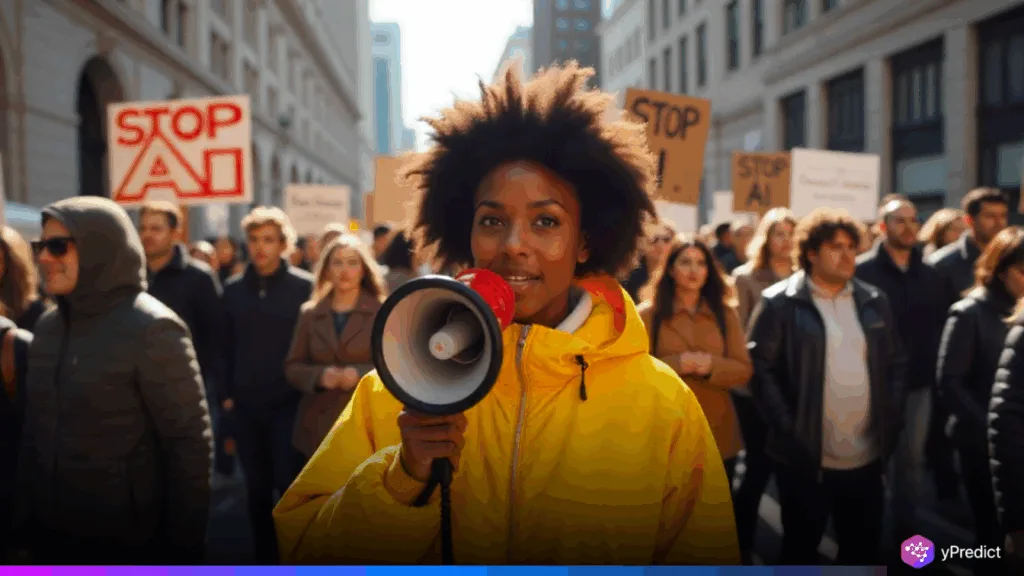
The Stop AI protest took place on August 22, 2025, outside the San Francisco office of OpenAI (1455 3rd Street, San Francisco), attracting the attention of passers-by with bright posters and alarming slogans. People used messages like “Takes Your Job” and “Humans Over AI” to express the growing concern about the effects on employment created by automation, as well as the more general concern over the potential dangers of automation in the form of artificial intelligence. The protest will be in a format that will become repetitive during future months and is not an isolated even,t but part of an international trend in protesting the AI industry.
Rising Concerns Over Artificial Intelligence
People have noted the picket in San Francisco not only because of the large number of participants attracted to the event, but also because of the aggressive language that they referred to as threats of an existential kind, and the signs urging the restriction of technology. Protesters were reacting to the mainly worldwide concerns about the pace of implementation of AI, especially its effects on employment. Challenger, Gray & Christmas conducted a 2025 report that found over 27,000 AI-related job layoffs in the United States since 2023.
The phenomenon of AI taking jobs was not a mere slogan but a reality for many protesters who may have financial problems and career insecurity. Freelance writers and illustrators complain that the work demand has fallen due to the wide use of AI. Such fears elicit memories of writings on past experiences like the Industrial Revolution, where workers were replaced in several jobs, which thereafter saw the creation of different jobs. However, this time around with AI, the flexibility of the technology in other sectors spells out greater worries. The Stop AI movement makes such fears visible in the social realm, issuing a common cry of alarm and of communal action.
Balancing Between Alarm and Opportunity
Although the Stop AI campaign presents artificial intelligence as an existential threat, experts and scholarly research see a more complicated reality. A study carried out in 2024 by the MIT Sloan Management Review showed that, with proper regulation, AI can boost creativity and industry productivity by 30 percent. In the same manner, the Australian Productivity Commission highlighted in its 2025 outlook that appropriate frameworks targeting data accessibility and control can use AI as an engine of sustainable growth.
In the past, technology threats posed an issue, but innovators created new possibilities. To illustrate, many expected that equipping multiple hospitals with state-of-the-art machinery would reduce the workforce in radiology; in fact, it increased the need for radiologists in many hospitals.Balanced integration advocates believe that, instead of ceasing development as Stop AI does, it is necessary to come up with rules that can help safeguard workers and hold them accountable.
Nevertheless, the protests cannot be simply dismissed, as they reflect the public feelings that have to be addressed. The extreme slogan “protest or die!” might be exaggerating the worst cases, but it conditions a wider unresolved argument. Through its organized protests regularly, Stop AI does not allow officials to breathe easy on the issue.
Conclusion
The demonstration in front of OpenAI is one of the turning points in the ongoing attempt to decouple the ambitions of technological advancement and popular uncertainty. The Stop AI campaign has put the issue of automation, the safety of artificial intelligence, and its development on the table by means of its slogans and continuing activities. Although critics claim that the apocalyptic approach that the group takes dismisses all possible advantages of AI, one cannot refute that it has allowed the issue to become a global discussion.






